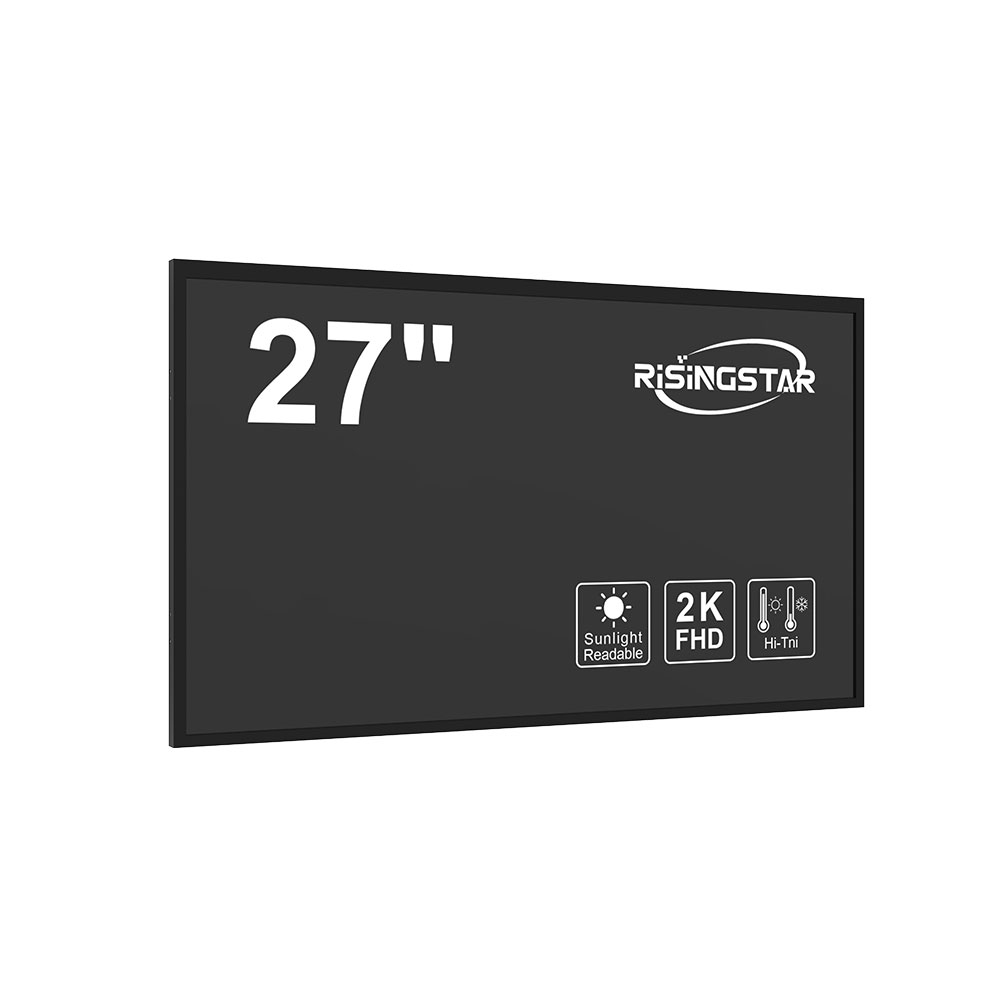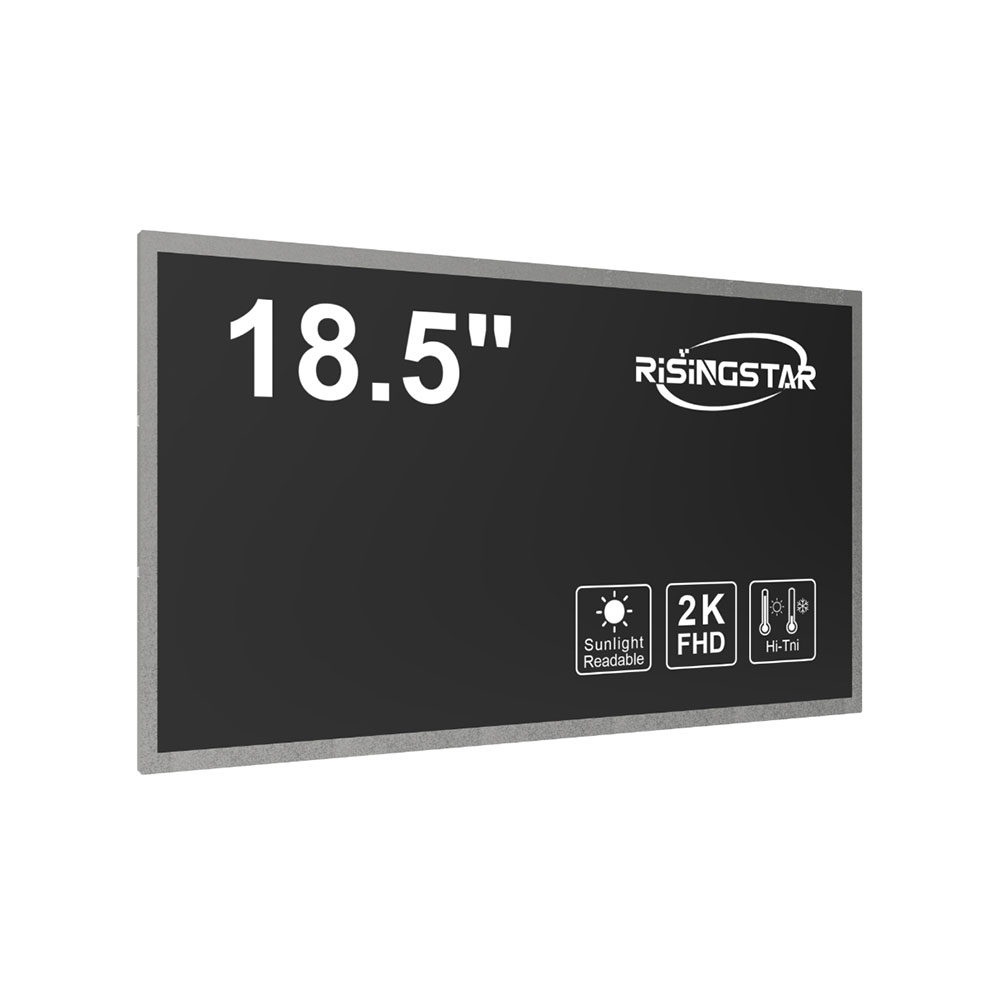In the rapidly evolving world of display technology, the demand for sunlight-readable high-brightness LCD screens has surged—particularly in outdoor and industrial environments. These screens are no longer a niche product; they are essential components in transportation systems, military operations, construction equipment, medical devices, and even public information kiosks. What makes these displays unique is their ability to maintain clarity and visibility under direct sunlight, often exceeding 5,000 nits of brightness—a standard that traditional indoor LCDs simply cannot meet.
The challenge of designing such screens lies not only in increasing luminance but also in addressing contrast, color accuracy, power efficiency, and thermal management. This article delves into the engineering principles, materials science, and real-world applications behind modern sunlight-readable high-brightness LCDs. Drawing on industry case studies from companies like Sharp, LG Display, and Corning, as well as standards such as MIL-STD-810G and ISO 9241-3, we explore how manufacturers optimize performance for extreme conditions while ensuring reliability and longevity.
At the heart of any high-brightness LCD is the backlight system. Conventional LED backlights used in consumer electronics typically produce around 500–1,000 nits, insufficient for outdoor use. To achieve sun-readable performance, engineers employ high-efficiency LEDs with optimized phosphor coatings and spatial light distribution. For example, some premium outdoor displays now integrate arrays of micro-LEDs or edge-lit mini-LED modules that provide both uniform illumination and dynamic dimming capabilities. According to a 2023 study published by the Society for Information Display (SID), mini-LED backlights can increase peak brightness by up to 40% compared to standard white LEDs without significantly raising power consumption.
Another critical factor is the screen’s surface treatment. Anti-glare coatings, such as nano-textured glass or matte films, reduce specular reflection—an issue that causes “hotspots” where sunlight reflects directly into the viewer's eyes. Corning Gorilla Glass 6, used in many ruggedized displays, offers not only scratch resistance but also a hydrophobic layer that repels water and dust, maintaining optical clarity even in humid or dusty environments. In fact, a field test conducted by the U.S. Army Research Laboratory in 2022 showed that anti-reflection-treated panels maintained 92% readability at 7,000 nits, outperforming untreated counterparts by over 25%.

Contrast ratio remains a major hurdle. While high brightness helps visibility against sunlight, poor contrast can make text and graphics appear washed out. Advanced LCD technologies like IPS (In-Plane Switching) and VA (Vertical Alignment) panels have improved viewing angles and black levels, but achieving true contrast ratios above 10,000:1 requires additional strategies. One effective method is local dimming control, which dynamically adjusts the intensity of different backlight zones based on content. For instance, when displaying a dark image on a bright background, local dimming reduces the backlight behind dark areas, enhancing perceived contrast. Samsung’s “Smart Dimming” algorithm, tested in 2021 across multiple automotive dashboards, demonstrated an average improvement of 30% in contrast perception under sunlight.
Power efficiency is another key consideration, especially for battery-powered devices like drones, handheld medical tools, and portable command units. A typical 10-inch sunlight-readable LCD may consume 5–10 watts, far more than its indoor counterpart (1–2 watts). To address this, manufacturers implement intelligent power management systems that adjust brightness based on ambient light sensors. The IEC 62301 standard governs energy consumption testing, and leading suppliers now comply with it to ensure compliance with global regulations. Moreover, OLED-based solutions, though more expensive, offer superior power efficiency due to pixel-level emission—only lit pixels consume power. However, for ultra-high-brightness applications (above 5,000 nits), LCDs still dominate due to cost-effectiveness and proven durability.

Thermal design plays a crucial role in long-term reliability. High-brightness LEDs generate significant heat, which can degrade liquid crystal alignment and shorten panel lifespan. Engineers must incorporate efficient heat sinks, thermally conductive adhesives, and sometimes active cooling fans in compact enclosures. Industrial-grade displays rated IP65 or higher often feature sealed housings with internal airflow channels designed using computational fluid dynamics (CFD) simulations. For example, Panasonic’s outdoor LCDs for railway signaling systems include aluminum heatsinks with fin structures that reduce junction temperature by up to 15°C compared to passive designs, extending operational life beyond 100,000 hours.
Real-world deployment cases underscore the importance of these innovations. In 2020, the city of Dubai implemented smart traffic signs equipped with 6,000-nit LCDs in desert conditions where ambient temperatures regularly exceed 45°C. These signs utilized dual-layer anti-reflection coatings and integrated ambient light sensors to automatically adjust brightness, reducing energy consumption by 30% during night-time operation. Similarly, the U.S. Navy deployed sunlight-readable displays on amphibious assault ships, where saltwater exposure and intense solar radiation posed severe challenges. By combining UV-resistant polymer layers with reinforced glass substrates, the displays retained 95% of initial brightness after 18 months of continuous exposure.
From a manufacturing perspective, yield rates for high-brightness LCDs remain lower than standard ones due to tighter tolerances in backlight assembly and optical film stacking. Companies like AU Optronics and BOE have invested heavily in automated optical inspection systems that detect defects at the micron level before final packaging. Their production lines now achieve >98% yield for 5,000-nit panels, a significant improvement from just five years ago. Additionally, new materials such as graphene-based transparent electrodes and quantum dot-enhanced color filters are being explored to push brightness limits further while improving response times and color gamut.
For designers and integrators, selecting the right sunlight-readable LCD involves understanding trade-offs between brightness, resolution, viewing angle, and environmental resilience. The JEDEC JESD203B standard provides guidance on brightness classification for outdoor displays, categorizing them into three tiers: Class A (1,000–3,000 nits), Class B (3,000–5,000 nits), and Class C (5,000+ nits). Most military and aerospace applications fall into Class C, requiring rigorous testing per MIL-STD-810H for shock, vibration, and temperature cycling.
Ultimately, sunlight-readable high-brightness LCDs represent the convergence of optics, electronics, materials science, and human factors engineering. As mobile computing and IoT expand into harsh environments—from autonomous vehicles to remote health monitoring—the need for reliable, readable displays will only grow. Future developments may see integration with AI-driven adaptive brightness algorithms, flexible substrates for curved surfaces, and even photovoltaic self-powered displays. But for now, mastering the fundamentals of backlight optimization, surface engineering, and thermal control remains the cornerstone of successful outdoor display design.







